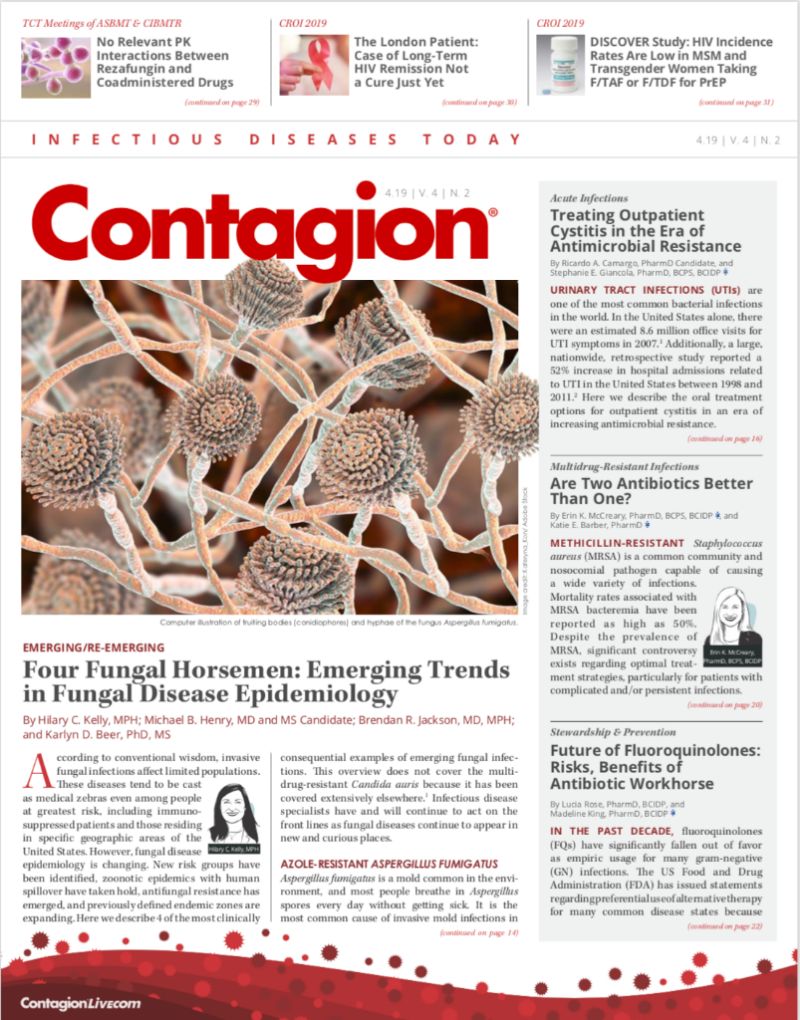HIV Infection in 2019: A Cure Is Not the Real News
Jason Gallagher, PharmD, FCCP, FIDP, FIDSA, BCPS, reacts to news of the London patient, the second person cured of HIV infection.
The announcement of the London patient, the second person cured of HIV infection through hematopoietic stem cell transplant, sent waves through the media and spurred a series of inaccurate headlines that put HIV back into focus for people who do not think about it often. I personally received a series of text messages along the lines of “Did you hear about the HIV cure?” and “I heard there’s someone in Europe with a cure for AIDS.” Because these came from intelligent, nonmedical people, it led me to reflect on the paucity of knowledge that most people have about the breakthroughs in HIV management and therapies.
One-pill regimens have been a reality for HIV regimens since the approval of efavirenz, emtricitabine, and tenofovir disoproxil fumarate (Atripla) more than 10 years ago. This revolution has continued with integrase strand transfer inhibitor (INSTI)—based regimens earlier this decade. Regimens containing 3 drugs can be replaced with 2-drug regimens, sparing patients from exposure to a third agent. In many ways, therapy for HIV infection has become easier to manage than that of diabetes. However, this is not well known outside infectious diseases clinicians, and even many HIV care practitioners are hesitant to transition patients whose infection is undetectable on an older 3-drug regimen to a novel regimen that decreases antiretroviral exposure.
Pre-exposure prophylaxis (PrEP) has transformed HIV prevention. Patients at high risk who are taking a single, well-tolerated antiretroviral are well protected from HIV infection, as is the public, by a reduction in transmission. It is a true public health revolution. However, the benefit has reached communities that are at risk at varying levels. Coastal gateway cities that formerly had the highest incidence of HIV infection but have instituted PrEP programs have been replaced by cities in the Southeast. Cities with a high prevalence and that provide PrEP programs are seeing the incidence drop. Despite high coverage by insurance companies, only a small proportion of patients who could benefit from PrEP currently receive it. Much needs to be done to spread the word to primary care providers and other clinicians, including pharmacists, nurse practitioners, and physician’s assistants, to screen and recommend PrEP when appropriate.
Finally, the U=U (undetectable=untransmittable) campaign has given a catchy title to an important principle but one that is not well known enough. It will take time to break down the stigma of HIV infection that has built up over decades, but overcoming that barrier is vitally important for the physical and mental health of millions of people. Using treatment as prevention may not be as catchy as “finding a cure” for HIV, but it is certainly much more realistic. Implementing this treatment will become only easier as new long-acting maintenance injectable antiretrovirals become available in the near future.
These areas of HIV medicine have in common a lack of sufficient awareness. Each is a major step forward from early therapies, advancing HIV from a death sentence to a chronic condition to the next step, which is making it an uncommon chronic condition in the United States and carrying advances forward into other countries. We may not have a cure, but we sure have come a long way. Let’s make certain that everyone knows it.
On the topic of HIV, this issue of Contagion® features a review of a new INSTI combination, Biktarvy; an article on event-driven PrEP; and highlights from the Annual Conference on Retroviruses and Opportunistic Infections (CROI). Our feature article this month, “Four Fungal Horsemen: Emerging Trends in Fungal Disease Epidemiology,” discusses several emerging fungal infections that may appear in unexpected places.
As always, enjoy this issue, and keep up with us at ContagionLive.com.

